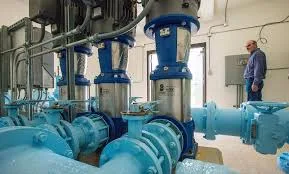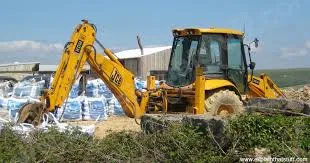Definition: A pump head calculator is a tool used to calculate the total head, pressure head, velocity head, and static head of a pump system. It helps engineers and technicians determine the energy requirements and capabilities of a pump for a given application. By inputting parameters such as pressure, fluid density, velocity, and static head, the calculator can provide the total head and its components.
Click the Translate button(see right) on this post to set your Own Language to understand more perfectly!!
Pump Head Calculator
m³/s
kg/m³
%
Definition Continue: the pump head calculator and provide supporting equations.
Pump Head: The pump head refers to the total energy added to the fluid by the pump. It includes both the pressure head (the energy added to overcome static pressure differences) and the velocity head (the energy added to overcome dynamic pressure differences).
Supporting Equations:
a.
Total Head (H): 𝐻=𝑃/𝜌𝑔+𝑉**2/2𝑔+ℎ𝑠
Where:
P = Pressure (in pascals or meter),
ρ = Density of the fluid (in kg/m³)
g = Acceleration due to gravity (in m/s²),
V = Velocity of the fluid (in m/s)
ℎ𝑠= Static head (in meters)
b.
Pressure Head (H_p) : 𝐻𝑝=𝑃/𝜌𝑔
Where:
P = Pressure (in pascals or mmHg or Atm)
ρ = Density of the fluid (in kg/m³)
g = Acceleration due to gravity (in m/s²)
c.
Velocity Head (H_v):𝐻𝑣=𝑉**2/2𝑔
Where:
V = Velocity of the fluid (in m/s)
g = Acceleration due to gravity (in m/s²)
d.
Static Head (H_s):𝐻𝑠=ℎ𝑠
Where:
hs = Static head (in meters)
Pump Head Calculator: A pump head calculator is a tool used to calculate the total head, pressure head, velocity head, and static head of a pump system. It helps engineers and technicians determine the energy requirements and capabilities of a pump for a given application. By inputting parameters such as pressure, fluid density, velocity, and static head, the calculator can provide the total head and its components.
Application: Pump head calculators are crucial in various industries such as water supply systems, HVAC (Heating, Ventilation, and Air Conditioning), chemical processing, and oil and gas. They aid in designing efficient pumping systems by ensuring the pump selected can provide the necessary head to overcome frictional losses and elevate the fluid to the desired height.
By understanding and utilizing the pump head calculator, engineers can optimize pump selection, system design, and operational efficiency, leading to cost savings and improved performance.
Calculating pump head is essential in various industries such as water supply, wastewater treatment, oil and gas, mining, and manufacturing. Here are several ways individuals and businesses can earn money by utilizing pump head calculations:
1. **Pump Design and Manufacturing**: Engineers and companies specializing in pump design and manufacturing can utilize pump head calculations to develop efficient and reliable pumping systems. By optimizing pump designs for specific applications and operating conditions, they can produce high-performance pumps that meet the needs of various industries. Revenue can be generated through the sale of pumps, pump components, and customized ump solutions.
2. **Pump Installation and Maintenance Services**: Pump installation contractors and maintenance service providers can use pump head calculations to select the appropriate pump size and configuration for a given application. They can offer services such as pump installation, c ommissioning, performance testing, and preventive maintenance to industrial facilities, municipal water utilities, and commercial buildings. Revenue can be earned through service contracts, project fees, and spare parts sales.
3. **Water Resource Management**: Consulting firms specializing in water resource management can utilize pump head calculations to design and optimize water supply systems, irrigation networks, and wastewater treatment plants. By analyzing factors such as flow rates, pressure requirements, and elevation changes, they can develop cost-effective solutions for water distribution and conveyance. Revenue can be generated through consulting fees, project management services, and implementation contracts.
4. **Mining and Mineral Processing**: Pump head calculations are crucial in mining operations for dewatering, slurry transport, and ore processing. Companies involved in mining and mineral processing can utilize pump head calculations to design and operate pumping systems for mine drainage, tailings disposal, and mineral slurry transportation. Revenue can be earned through mineral extraction, processing services, and contract mining agreements.
5. **Oil and Gas Production**: Pump head calculations play a vital role in oil and gas production for well stimulation, water injection, and crude oil transportation. Oilfield service companies can utilize pump head calculations to design and operate pumping systems for hydraulic fracturing, enhanced oil recovery, and pipeline transportation. Revenue can be generated through oilfield services, equipment rental, and production enhancement solutions.
6. **Industrial Process Engineering**: Manufacturing plants and industrial facilities rely on pumps for various processes such as chemical processing, food and beverage production, and pharmaceutical manufacturing. Process engineers can use pump head calculations to size and select pumps for fluid transfer, mixing, and circulation applications. Revenue can be earned through process optimization services, equipment sales, and maintenance contracts.
7. **Energy Efficiency Consulting**: Energy consulting firms can utilize pump head calculations to assess the energy efficiency of pumping systems and identify opportunities for energy savings. By optimizing pump selection, system design, and operating conditions, they can help clients reduce energy consumption and operating costs. Revenue can be generated through energy audits, efficiency improvement projects, and performance-based contracts.
8. **Training and Education**: Institutions offering courses and training programs in mechanical engineering, fluid dynamics, and pump technology can incorporate pump head calculations into their curriculum. Educators can develop training materials, workshops, and certification programs focused on pump design, operation, and maintenance, charging tuition fees to participants.
These are just a few examples of how individuals and businesses can earn money by utilizing pump head calculations in various industries and applications. The versatility of pump technology makes it a valuable asset in sectors ranging from water supply and wastewater treatment to mining, oil and gas, manufacturing, and beyond.
How to earn money using pump Head Calculation:
1. **Pump Design and Manufacturing**:
2. **Pump Installation and Maintenance Services**:
3. **Water Resource Management**:
4. **Mining and Mineral Processing**:
5. **Oil and Gas Production**:
6. **Industrial Process Engineering**:
7. **Energy Efficiency Consulting**:
8. **Training and Education**Special way to earn money continiously click the link for more ideas!!!!





























